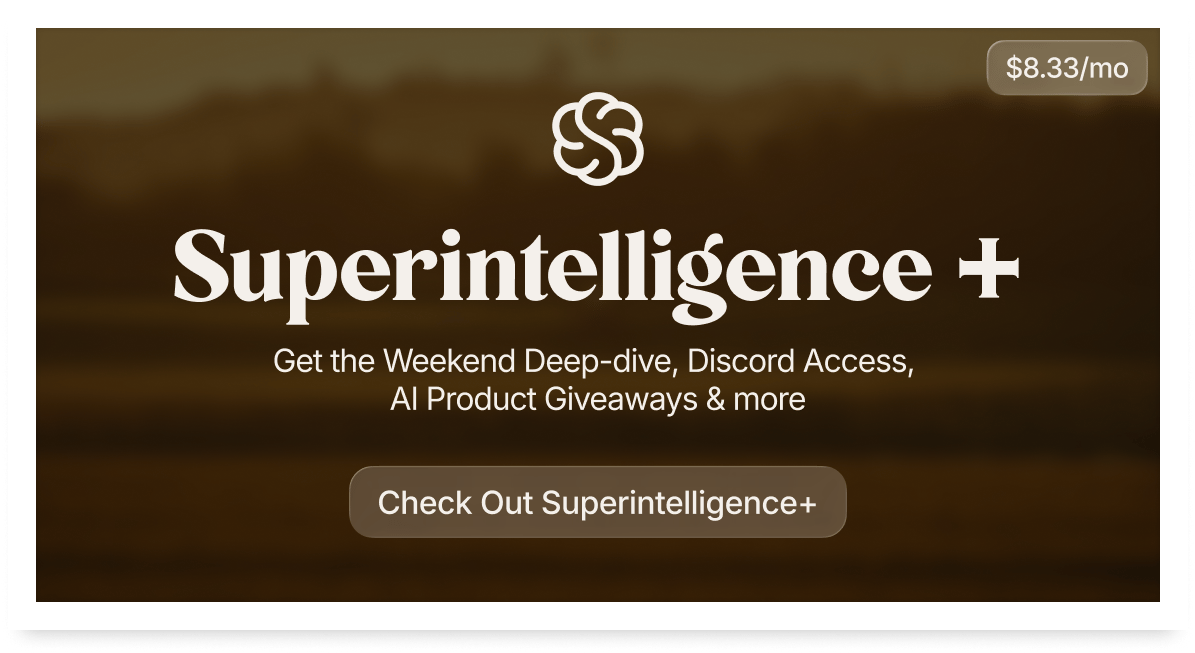
Dear Readers,
Each week, the line between the biological and the artificial grows thinner. Apple is about to rent Google’s trillion-parameter brain for Siri. Scientists just taught AI to describe what a person sees inside their head. And NVIDIA’s new OpenFold3 model now predicts not only proteins but entire molecular dances. The question isn’t whether machines can think, it’s whether we’re ready for the pace at which they’re beginning to interpret us.
Today’s edition moves across the full spectrum of that transformation: the economics of AI-driven growth, the maps that talk back, the code that edits DNA, and the quiet arrival of an age where most words online are no longer human-made. It’s a strange new frontier: intelligent, synthetic, and accelerating fast. Dive in and see how deep the shift already runs.
In Today’s Issue:
📈 Boaz Barak argues that AI-driven automation could trigger exponential economic growth
🧬 A CRISPR breakthrough enables bulk DNA deletion
🧠 Researchers develop "mind-captioning" AI that translates brain activity
✍️ AI-generated content officially surpassed human-written articles
✨ And more AI goodness…
All the best,




Apple Bets Big on Google AI
Apple is close to sealing a $1 billion-a-year deal with Google to use its 1.2 trillion-parameter Gemini model to power Siri’s next-generation “summarizer” and “planner” features. The move marks Apple’s biggest AI partnership yet, a stopgap while it builds its own 1 trillion-parameter model, targeted for release next year.

Google Maps Gets Conversational Upgrade
Google Maps is getting a major Gemini-powered overhaul, introducing hands-free, conversational navigation that lets users ask for route updates, parking info, or even add calendar events, all by voice. The AI also brings landmark-based directions (“turn right after Thai Siam Restaurant”), proactive traffic alerts, and Lens-powered local discovery for real-time insights about nearby spots.

AI Cracks Protein Structure Code
OpenFold3, the newest model from the OpenFold Consortium and NVIDIA, pushes biomolecular prediction into a new era, now modeling not just proteins but also multi-chain complexes, nucleic acids, and small molecules. Built with NVIDIA’s cuEquivariance, MMseqs2-GPU, and FLARE technologies, it delivers faster, symmetry-aware, and privacy-safe computation for biopharma and biotech teams.


NVIDIA’s new Omniverse initiative focuses on real-to-sim reconstruction - turning real-world sensor data into accurate digital twins for training physical AI systems.


AI Meets Economics: A New Growth Frontier
The Takeaway
👉 Boaz Barak argues that even modest automation could trigger exponential economic growth.
👉 His model links AI progress directly to productivity and output, reframing AI as an economic driver, not just a tech leap.
👉 The essay pushes the AI community to think in macro terms: how automation reshapes labor, value, and policy.
👉 The underlying message: transformative AI might arrive sooner than we think, not because models evolve faster, but because economies will.
A quiet revolution is stirring at the intersection of artificial intelligence and economics - and it’s not just about faster chips or smarter algorithms. In his November 2025 piece titled “Thoughts by a non-economist on AI and economics”, Boaz Barak argues that AI isn’t merely a technological upgrade, but a potential engine for transformative economic growth. He uses simple models to show how automating even a small fraction of tasks each year could radically shorten the timeline to what we call “Transformative AI”. What does it mean?

First, It shifts our focus from algorithms in a lab to macroeconomics in motion, productivity, labor markets, task costs, and output growth. Second: it underscores that building AI isn’t just a tech race but a game-changer in economic structure (think: shifting who works and how outputs scale). Third: for innovators, investors, and startup founders, it signals that your AI mattering isn’t just about “Will it work?” but “Will it reshape economic value?”

Why it matters: The choices made now in research, policy, and business will determine how evenly the benefits of AI-driven growth are shared. This isn’t just about advancing capabilities; it’s about steering the transformation of entire economic systems.


Make Every Platform Work for Your Ads
Marketers waste millions on bad creatives.
You don’t have to.
Neurons AI predicts effectiveness in seconds.
Not days. Not weeks.
Test for recall, attention, impact, and more; before a dollar gets spent.
Brands like Google, Facebook, and Coca-Cola already trust it. Neurons clients saw results like +73% CTR, 2x CVR, and +20% brand awareness.



Arena Expert is the new LMArena evaluation framework designed to surface the most challenging, expert-level prompts from real users; powering a new Expert leaderboard for top-tier model testing.



CRISPR Breakthrough Enables Bulk DNA Deletion
Scientists have unveiled a pooled CRISPR-Cas12a system that can delete large chunks of DNA across multiple genomic sites at once; a leap for large-scale genetic reprogramming. This high-throughput method could speed up synthetic biology, enabling automated bio-design and tighter integration between genetic engineering and AI-driven optimization. It’s a major step toward scalable “bio-AI” systems capable of designing living technologies.

AI Turns Brain Activity Into Sentences
Researchers have created a “mind-captioning” AI that translates brain activity into full descriptive sentences, not just keywords. Using fMRI scans and deep-language models, the system decodes what people see or imagine with surprising detail, effectively narrating mental scenes. Beyond its sci-fi appeal, the technology could unlock new ways to understand perception and help those with speech loss regain communication.

AI Articles Now Outnumber Humans’
Graphite’s new study finds AI-generated content officially surpassed human-written articles on the web as of November 2024, reaching roughly 39% of all publications. Growth has since plateaued, likely because AI-made pieces underperform in Google Search results. Using CommonCrawl data and SurferSEO’s detection tool, researchers estimate a 4.2% false positive and 0.6% false negative rate, confirming most detected AI articles are genuine. Human-edited hybrid pieces, however, may be even more common.






